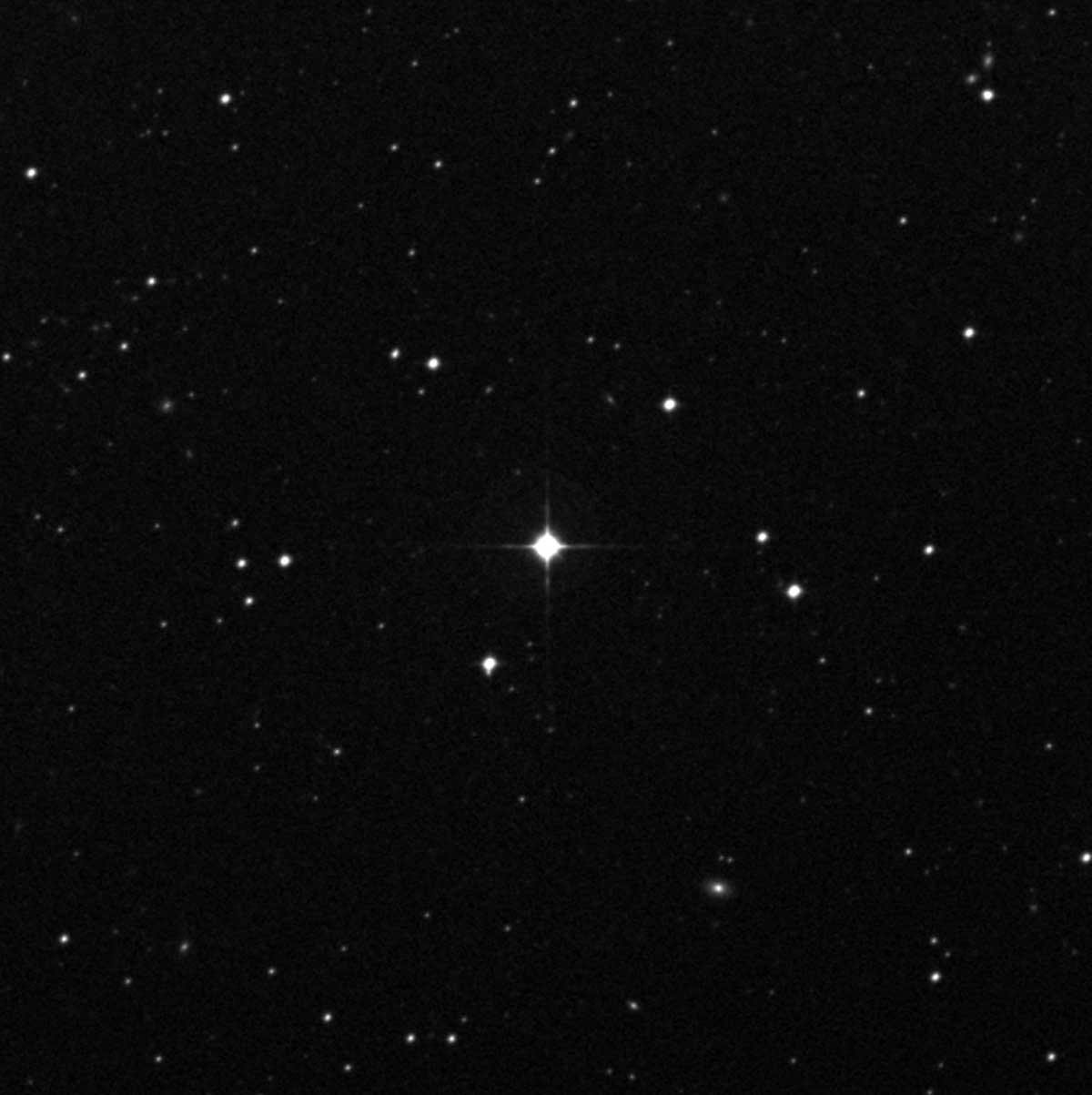In the sun’s neighborhood of the Milky Way Galaxy is a fairly bright star. For the first time, astronomers have successfully recognized the broadest variety of elements in this star that lies beyond the solar system.
 The star HD 222925 is a ninth-magnitude star located toward the southern constellation Tucana. Image Credit: The STScI Digitized Sky Survey.
The star HD 222925 is a ninth-magnitude star located toward the southern constellation Tucana. Image Credit: The STScI Digitized Sky Survey.
The research, directed by astronomer Ian Roederer at the University of Michigan, has detected 65 elements in the star, HD 222925. A total of 42 of the detected elements are heavy elements that are recorded at the bottom of the periodic table of elements.
Recognizing these elements in one star will enable astronomers to comprehend what is known as the “rapid neutron capture process,” or one of the significant ways by which heavy elements in the universe were formed.
Results of the study titled “The R-Process Alliance: A Nearly Complete R-Process Abundance Template Derived from Ultraviolet Spectroscopy of the R-Process-Enhanced Metal-Poor Star HD 222925” have been reported on arXiv and have been accepted for publication in the Astrophysical Journal Supplement Series.
To the best of my knowledge, that’s a record for any object beyond our solar system. And what makes this star so unique is that it has a very high relative proportion of the elements listed along the bottom two-thirds of the periodic table. We even detected gold.
Ian Roederer, Study Lead and Astronomer, University of Michigan
“These elements were made by the rapid neutron capture process. That’s really the thing we’re trying to study: the physics in understanding how, where and when those elements were made,” Roederer added.
The process, also known as the “r-process,” commences with the presence of lighter elements like iron. Then, quickly — on the order of a second — neutrons are incorporated into the nuclei of the lighter elements. This forms heavier elements like silver, selenium, tellurium, gold platinum and thorium - like those discovered in HD 222925, and all of which are seldom identified in stars, according to the researchers.
You need lots of neutrons that are free and a very high energy set of conditions to liberate them and add them to the nuclei of atoms. There aren’t very many environments in which that can happen—two, maybe.
Ian Roederer, Study Lead and Astronomer, University of Michigan
One of these environments has been established: the unification of neutron stars.
Neutron stars can be defined as the collapsed cores of supergiant stars, and are the densest and smallest known celestial entities. The collision of neutron star pairs produces gravitational waves and in 2017, astronomers first recognized gravitational waves from neutron stars that unified. Another way the r-process might take place is after the fiery death of colossal stars.
That’s an important step forward: recognizing where the r-process can occur. But it’s a much bigger step to say, ‘What did that event actually do? What was produced there? That’s where our study comes in.
Ian Roederer, Study Lead and Astronomer, University of Michigan
The elements that Roederer and his team spotted in HD 222925 were formed in either an enormous supernova or a union of neutron stars very early in the universe. The material was expelled and flung back into space, where it later reformed into the star Roederer is currently exploring.
This star can then be employed as a substitute for what one of those events would have created. Any model created in the future that shows how the r-process or nature forms elements on the bottom two-thirds of the periodic table must have the identical signature as HD 222925, Roederer states.
Significantly, the astronomers used a tool on the Hubble Space Telescope that can capture ultraviolet spectra. This tool was instrumental in enabling the astronomers to capture light in the ultraviolet part of the light spectrum — light that is indistinct, emanating from a cool star such as HD 222925.
The astronomers also employed one of the Magellan telescopes — a group of which the University of Michigan is a partner — at Las Campanas Observatory in Chile to capture light from HD 222925 in the optical region of the light spectrum.
These spectra encrypt the “chemical fingerprint” of elements inside stars, and reading these spectra enables the astronomers not only to recognize the elements enclosed within the star but also to figure out the quantity of each element within the star.
Anna Frebel, the study’s co-author and professor of physics at the Massachusetts Institute of Technology, assisted with the overall explanation of the HD 222925’s element abundance pattern and how it sheds light on one’s insight of the foundation of the elements in the universe.
We now know the detailed element-by-element output of some r-process event that happened early in the universe Any model that tries to understand what’s going on with the r-process has to be able to reproduce that.
Anna Frebel, Study Co-Author and Professor of Physics, Massachusetts Institute of Technology
Some of the study co-authors belong to a group known as the R-Process Alliance - a group of astrophysicists devoted to unraveling the challenging questions of the r-process. This project marks one of the team’s chief goals: recognizing which elements, and in what quantities, were formed in the r-process in an unparalleled level of detail.